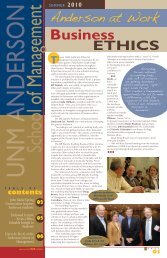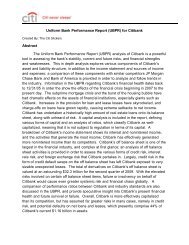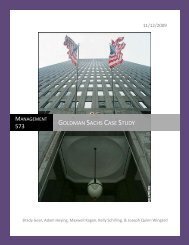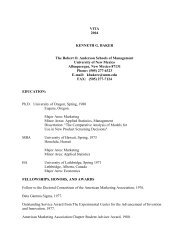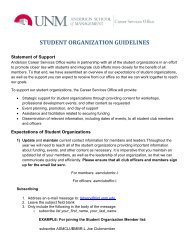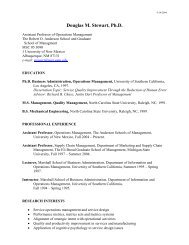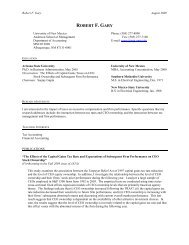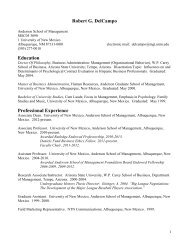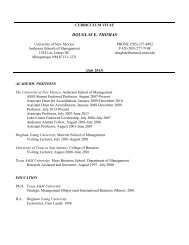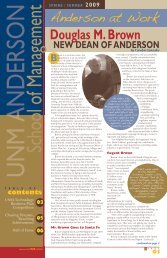Uniform Bank Performance Report - Anderson School of Management
Uniform Bank Performance Report - Anderson School of Management
Uniform Bank Performance Report - Anderson School of Management
You also want an ePaper? Increase the reach of your titles
YUMPU automatically turns print PDFs into web optimized ePapers that Google loves.
een lost. The investment banking model is gone, short‐term T‐Bills are returning close to 0%, and the<br />
national debt is approaching $12 Trillion. It is clear to see that the financial system <strong>of</strong> yesteryear was<br />
doing a few things wrong.<br />
To understand the state <strong>of</strong> the current financial system, it is useful to examine some <strong>of</strong> the major forces<br />
that have inspired these changes to occur. The most extreme changes to the banking system have<br />
occurred as a result <strong>of</strong> the financial crisis that began in October <strong>of</strong> 2008. The following section examines<br />
two <strong>of</strong> the main causes <strong>of</strong> the crisis, and shows how weaknesses in the system have affected, and will<br />
continue to affect the modern banking environment.<br />
Examining the Past<br />
Mortgage Backed Securities<br />
The first main factor is the securitization <strong>of</strong> mortgages to create Mortgage Backed Securities (MBS).<br />
Securitization, in theory, is an ingenious system whereby risky assets can be rearranged to enable more<br />
efficient risk distribution. However, recent history has shown that even in the highly calculated world <strong>of</strong><br />
finance, sound theories do not always translate into sound practices. The problem with securitizing<br />
mortgages was that it changed the way risk was distributed among parties involved in the process.<br />
Turning mortgages into MBS is a complicated process that requires the cooperation <strong>of</strong> many different<br />
parties (i.e. Mortgage originator, investment bank, Ratings Agency). The more complicated a process,<br />
the more likely it is that people will find ways to exploit it. This leads to the root <strong>of</strong> the problem with<br />
MBS. Due to a lack <strong>of</strong> planning, oversight, and regulation, inefficiencies in the process <strong>of</strong> mortgage<br />
securitization allowed individuals and groups to exploit the system for personal gain.<br />
The advent <strong>of</strong> mortgage securitization turned the mortgage market into a game <strong>of</strong> hot‐potato. It was no<br />
longer standard practice for loan originators (lenders) to hold loans on their books. Instead, the loans<br />
they made could be sold to banks, which securitized them and sold the MBS to raise large amounts <strong>of</strong><br />
capital. This was a great deal for lenders as they were able to reap the cash flows from lending, yet pass<br />
all <strong>of</strong> the risks on to banks. However, this also created a fundamental risk‐management problem. The<br />
lenders did not have to carry the risk on the loans they made. Therefore, there was no incentive for<br />
them to ensure the creditworthiness <strong>of</strong> the borrowers. In the years leading up to the crisis, the



